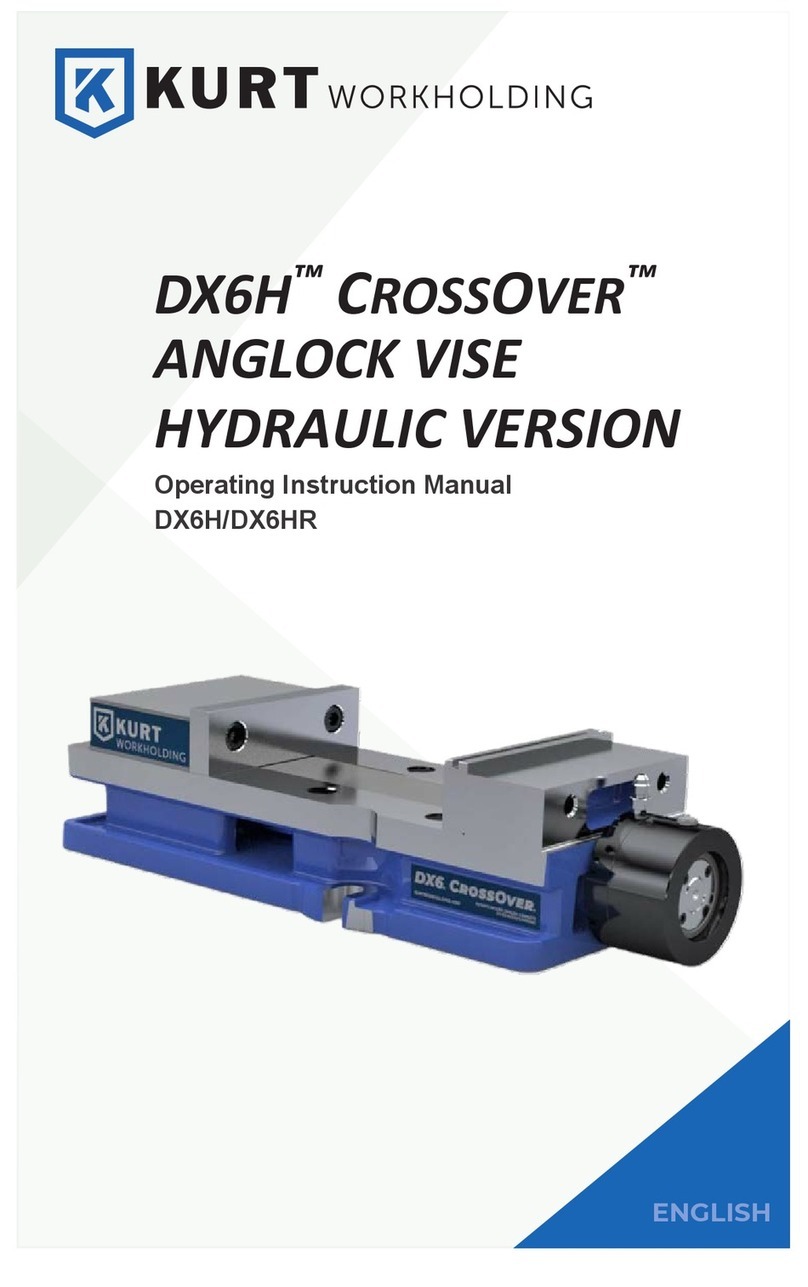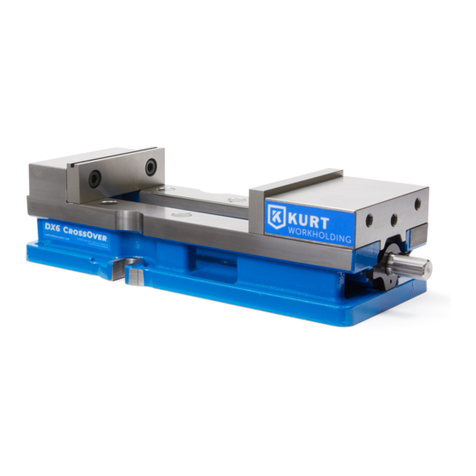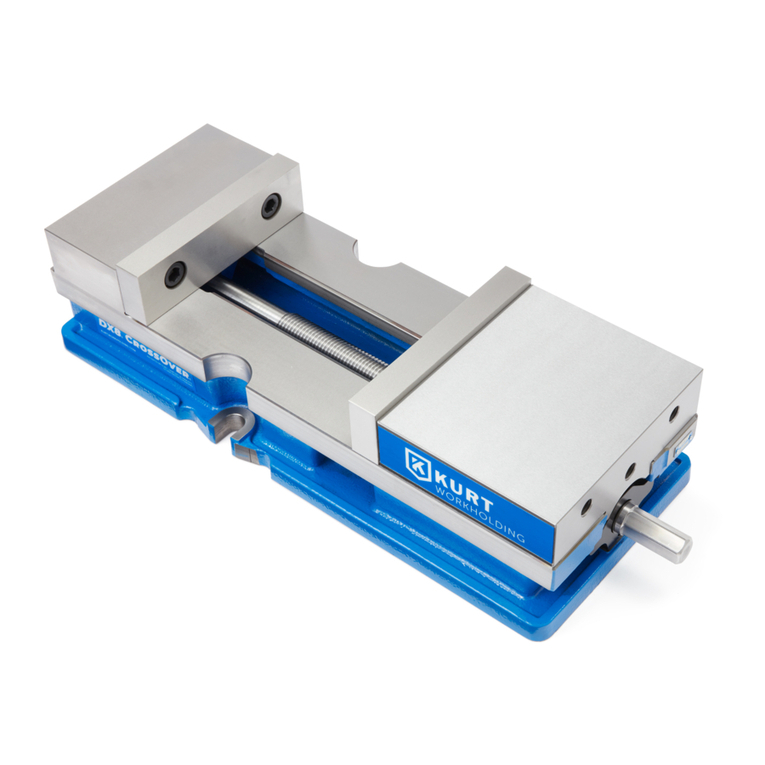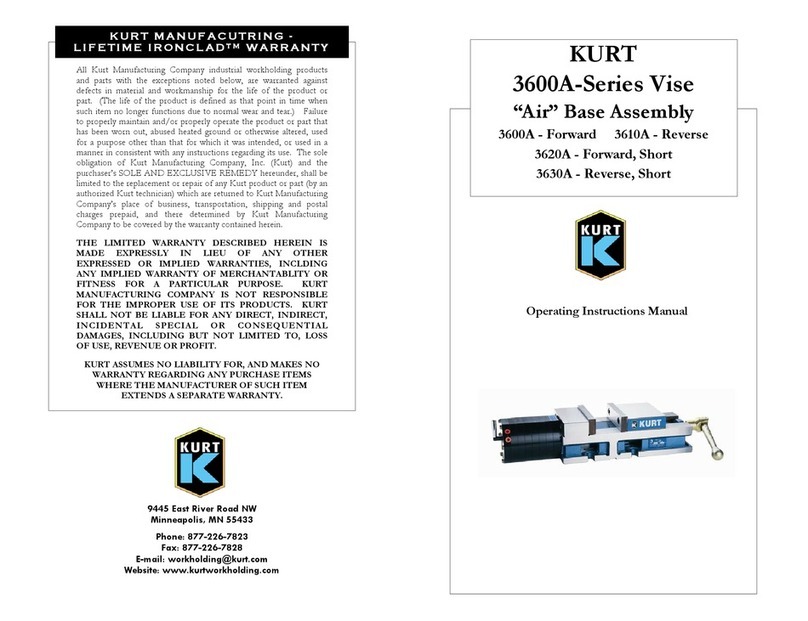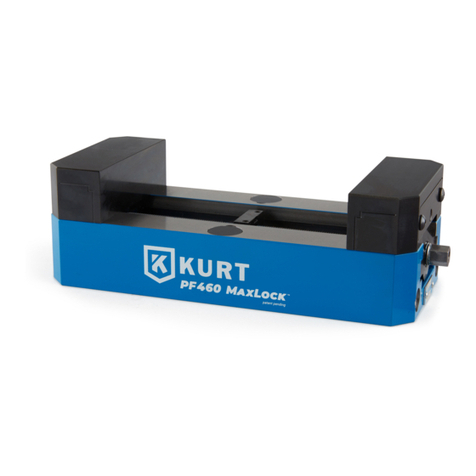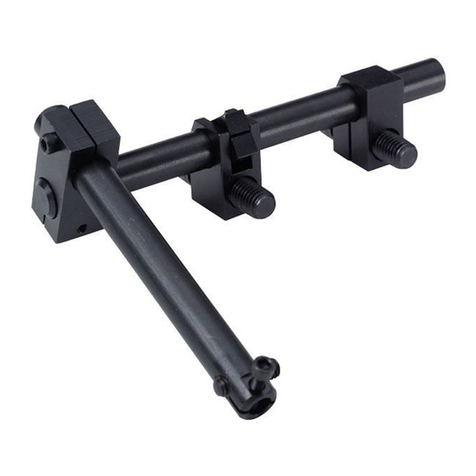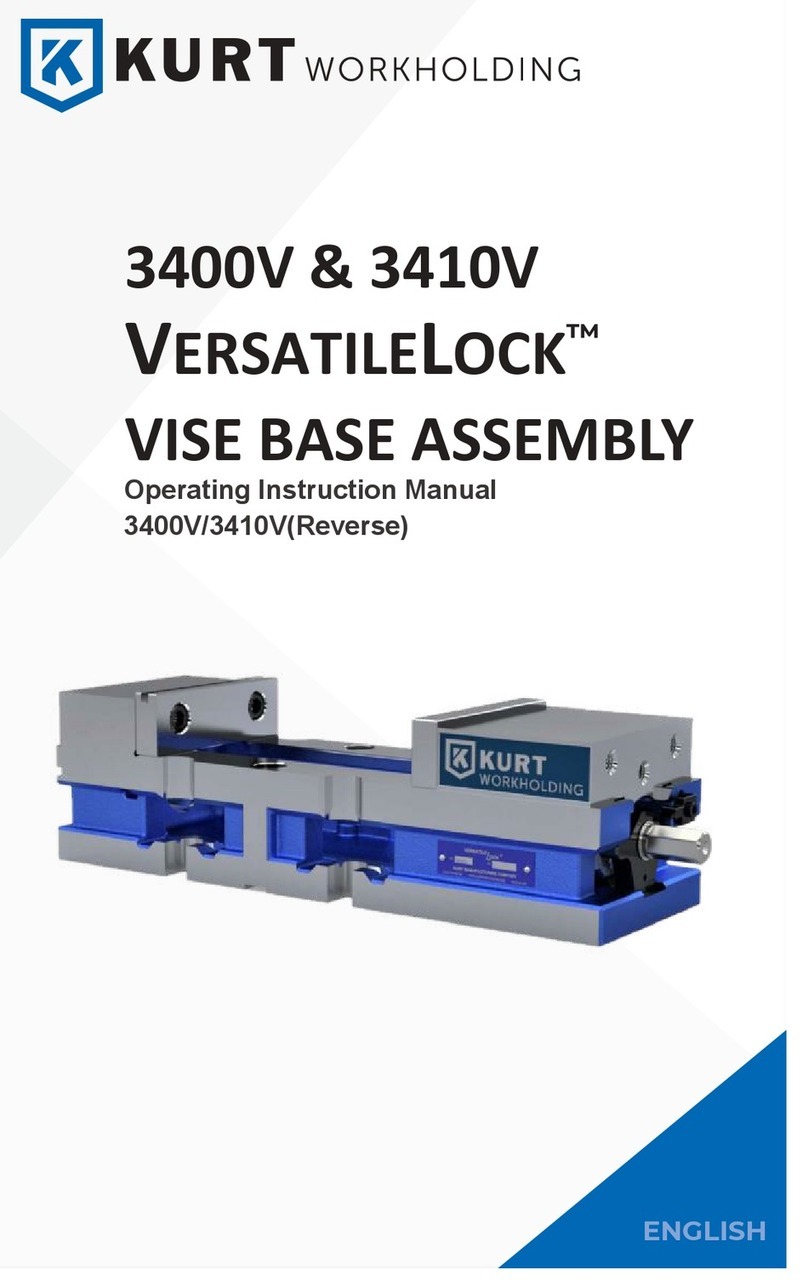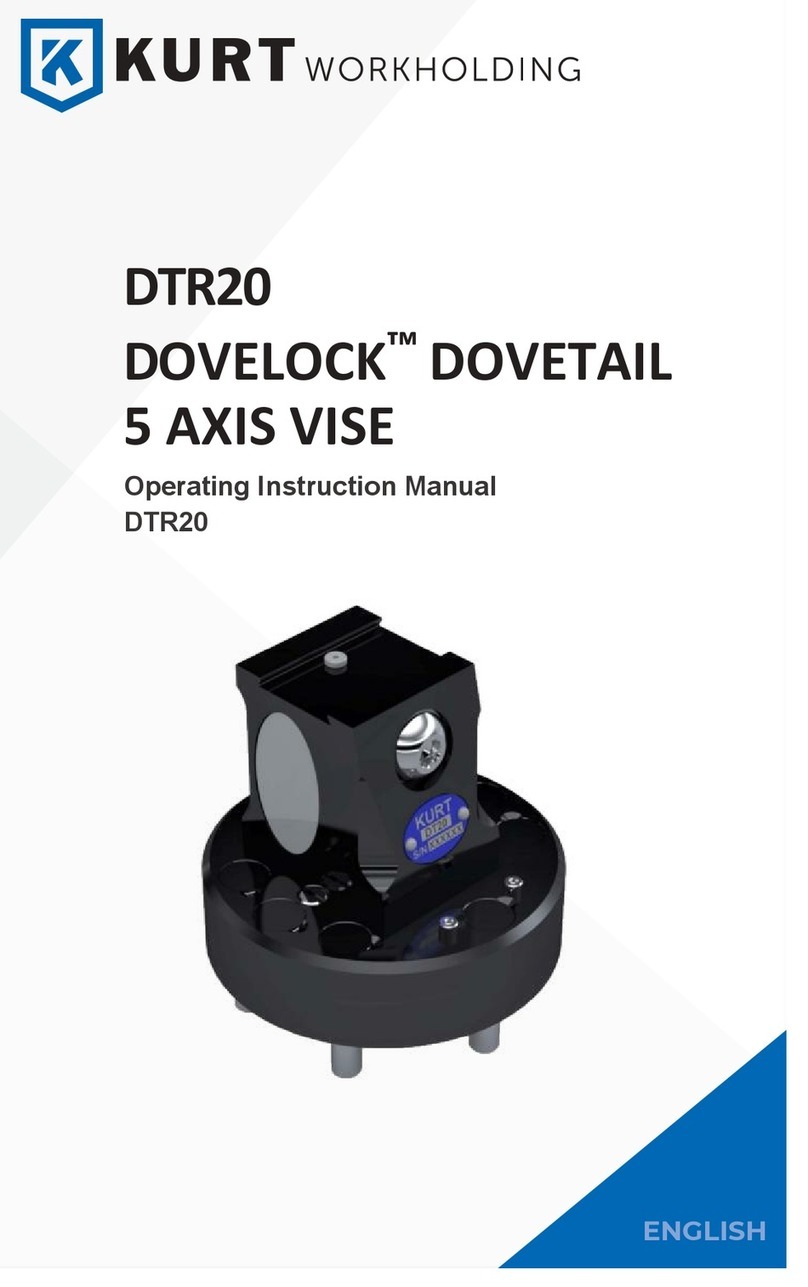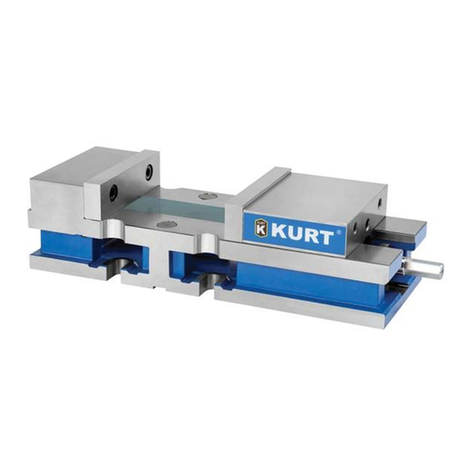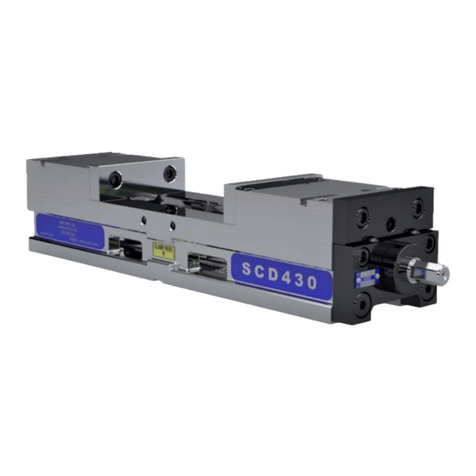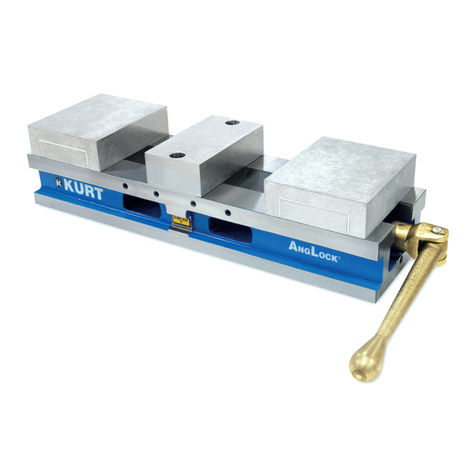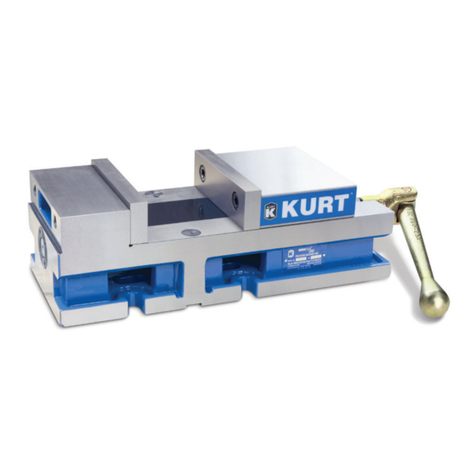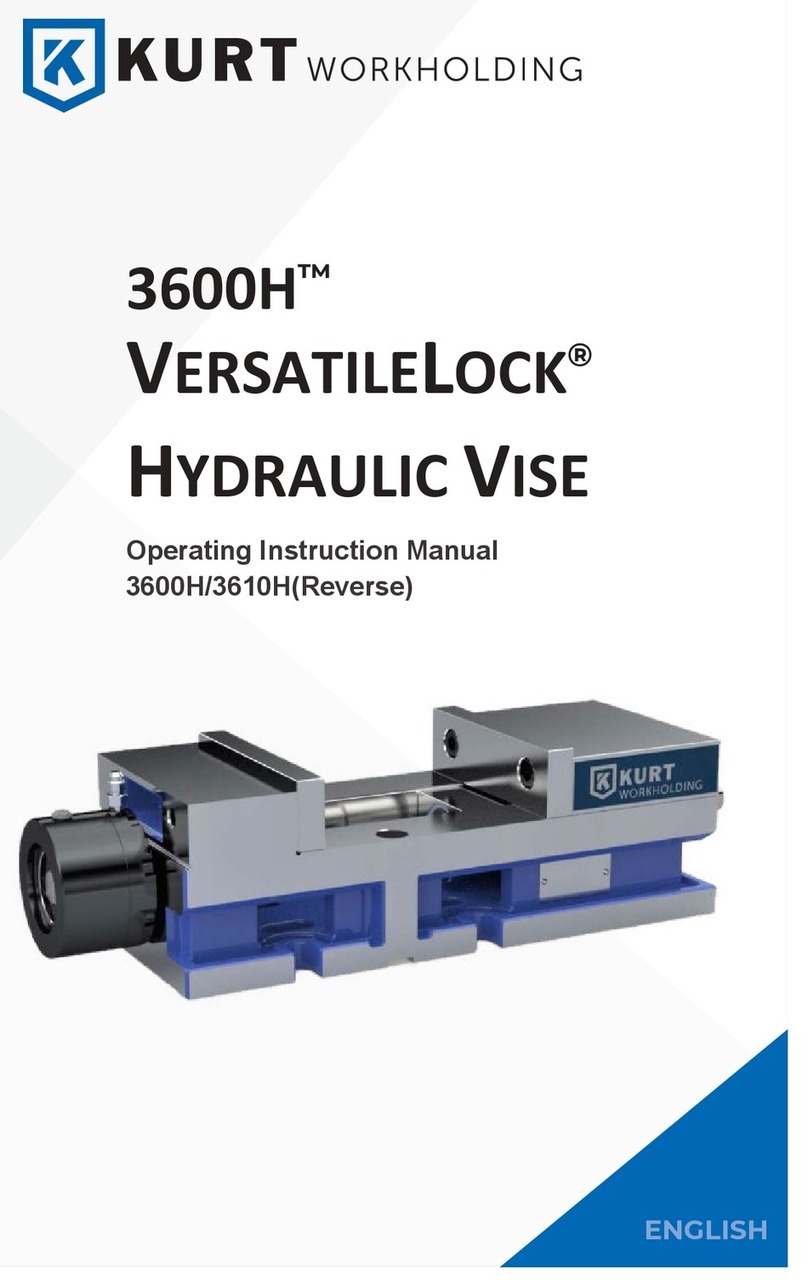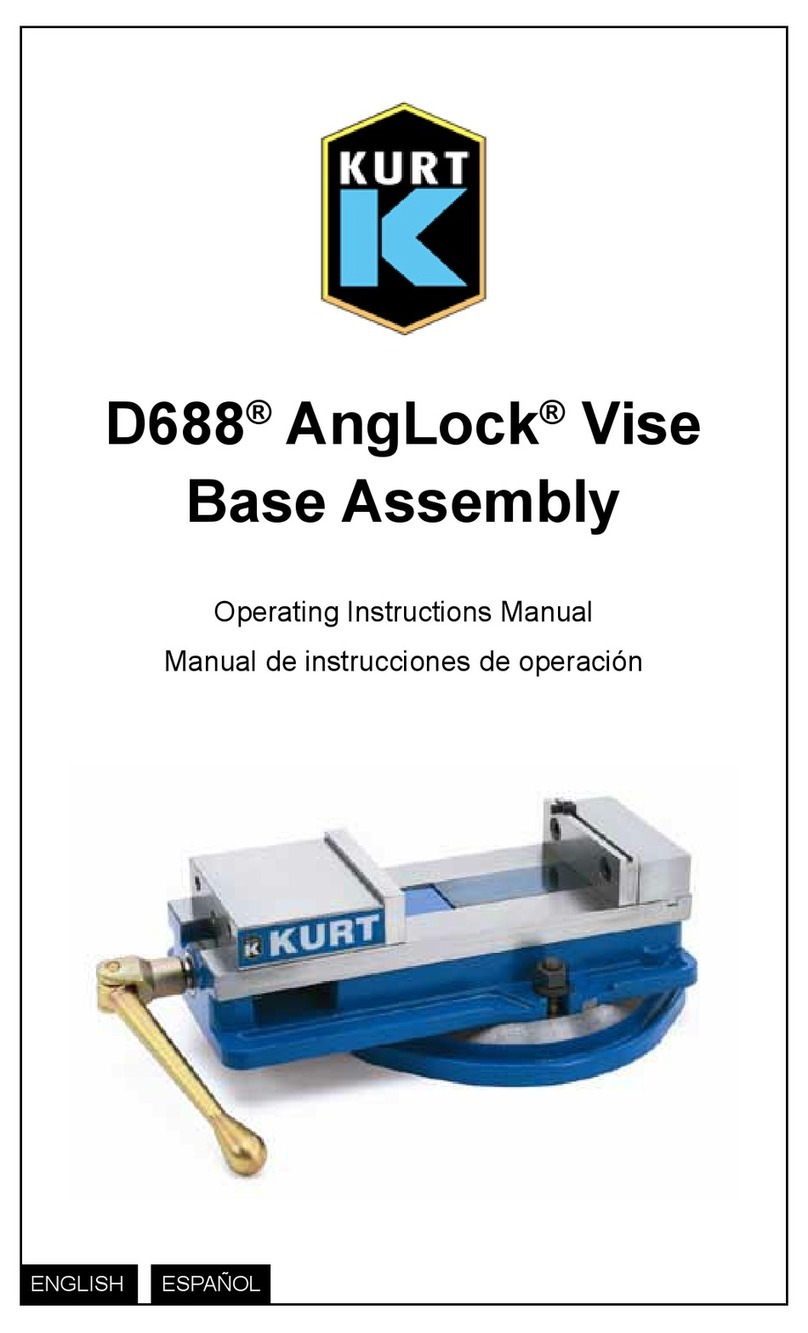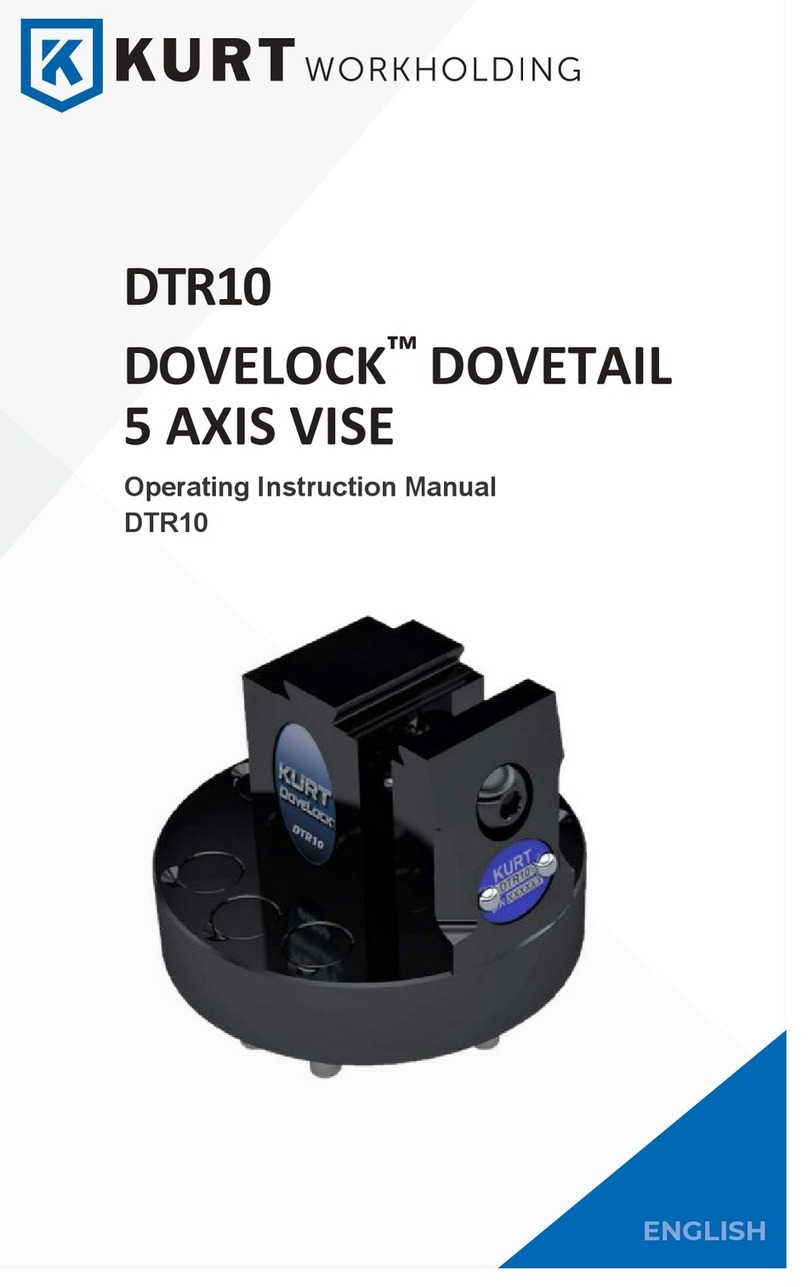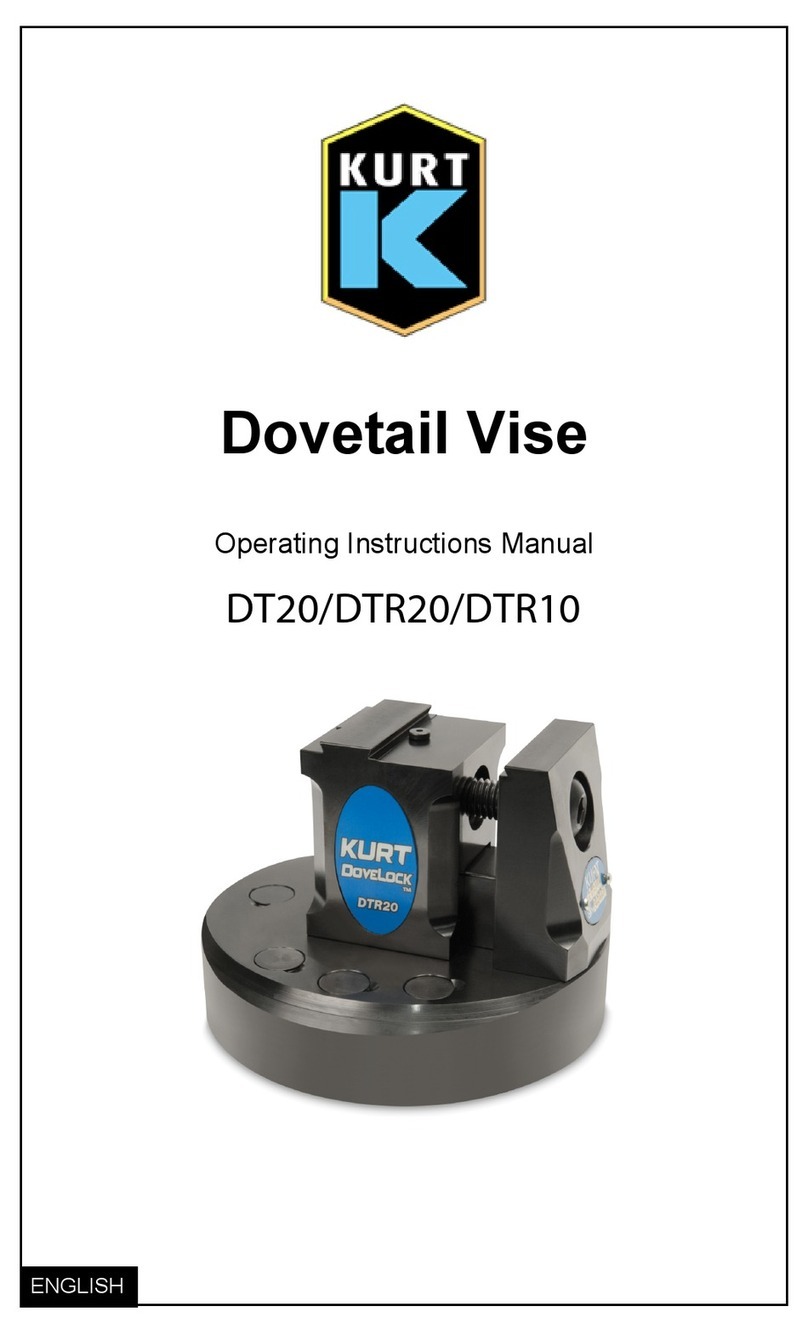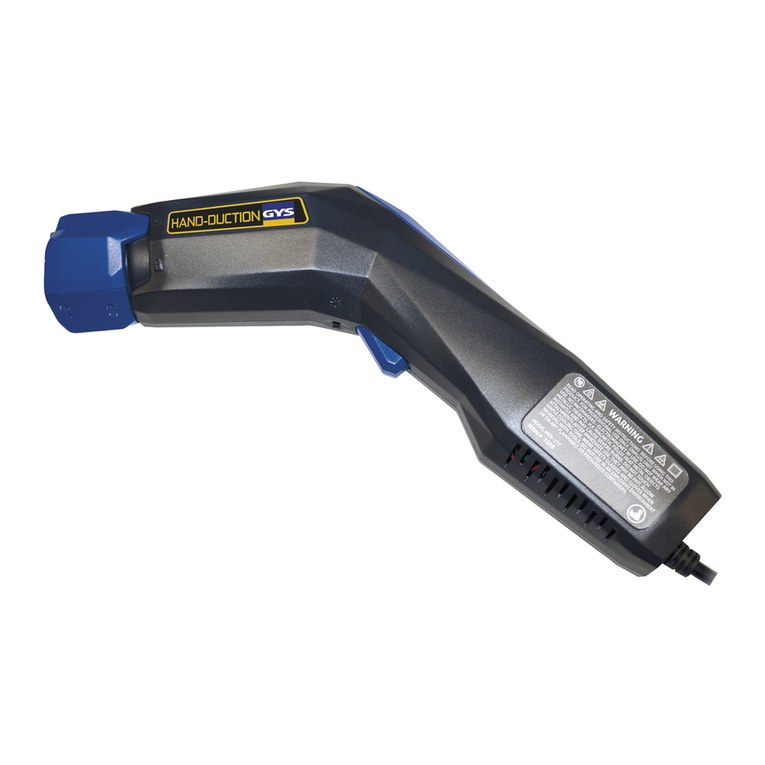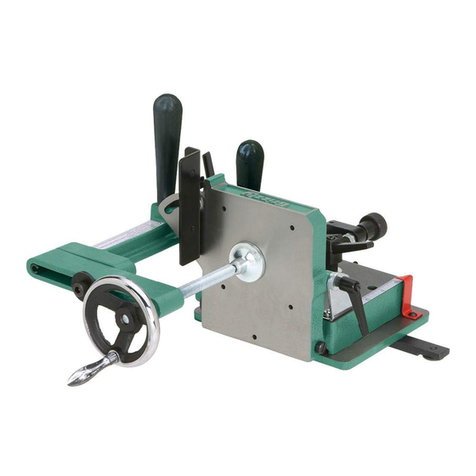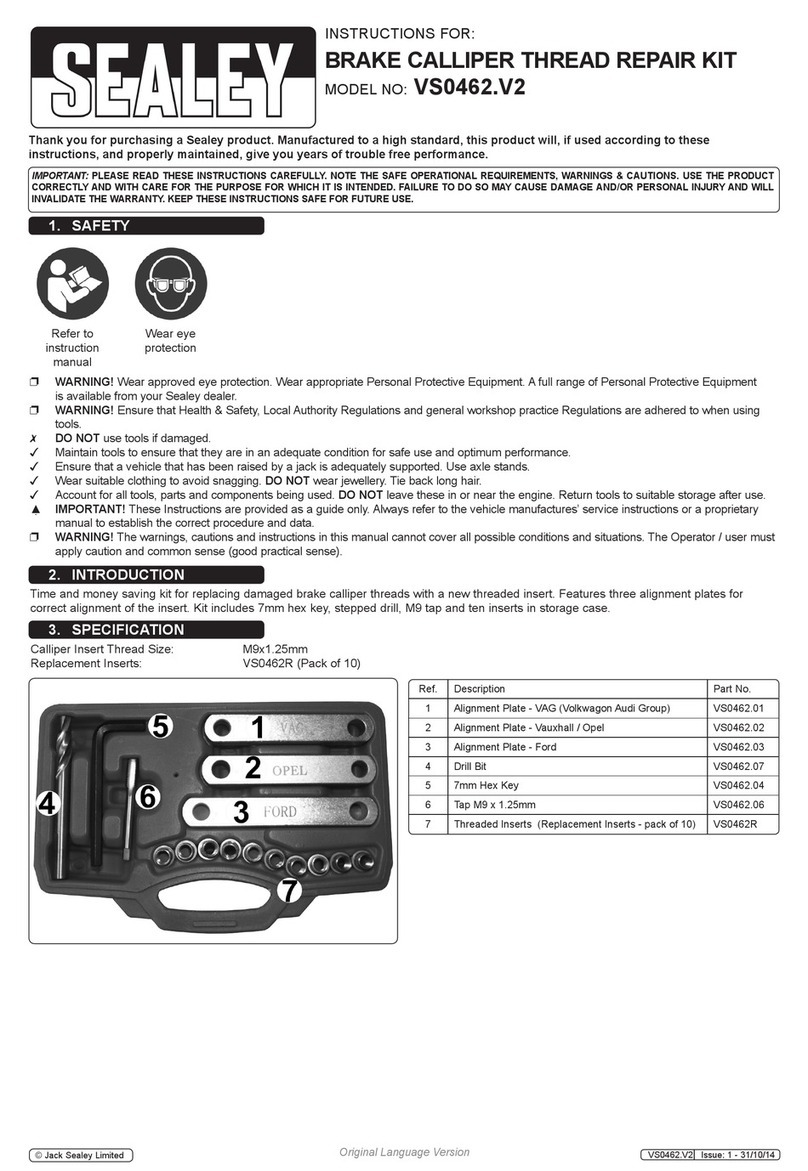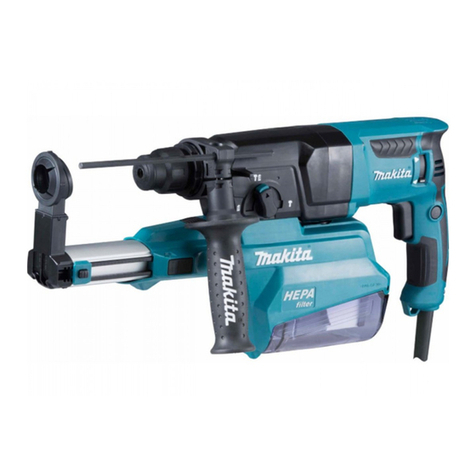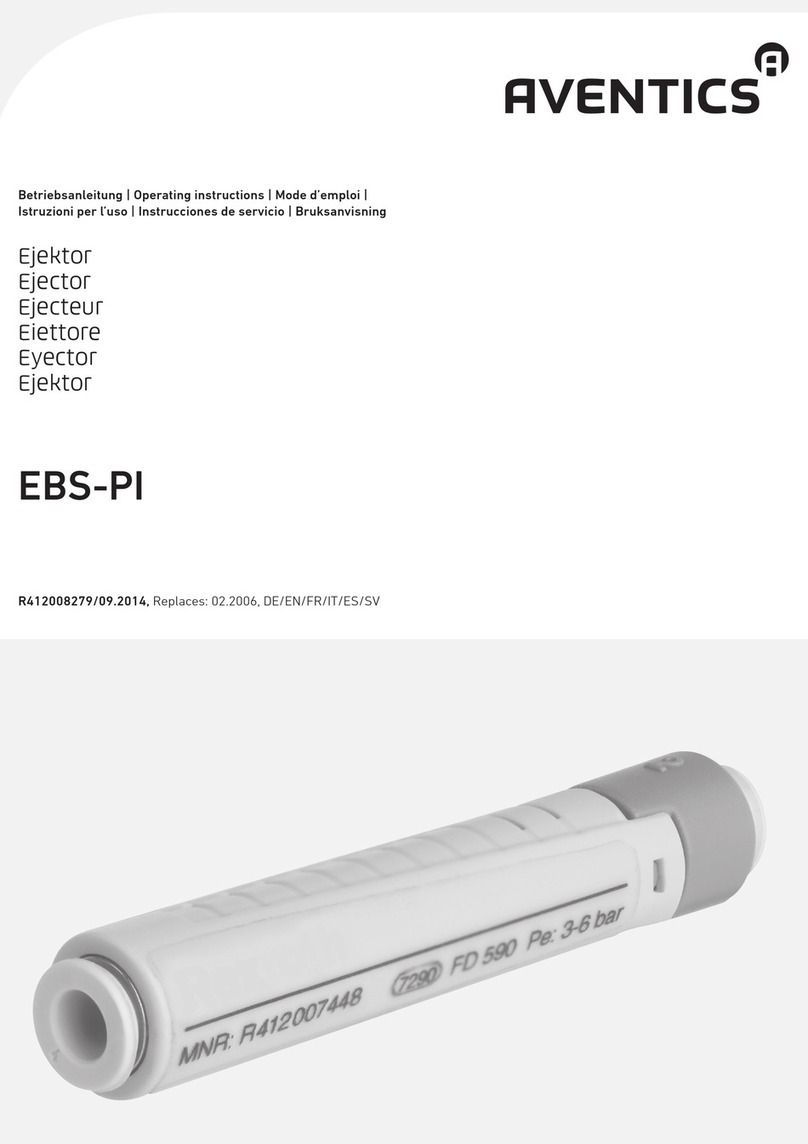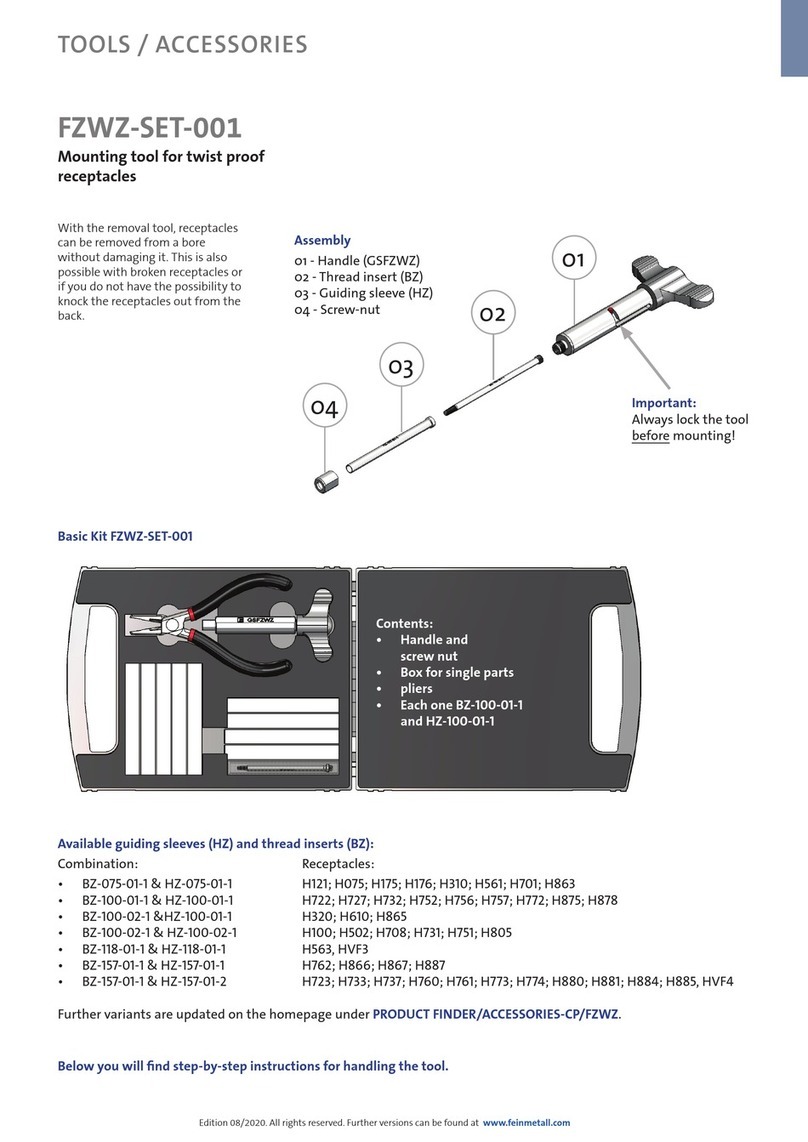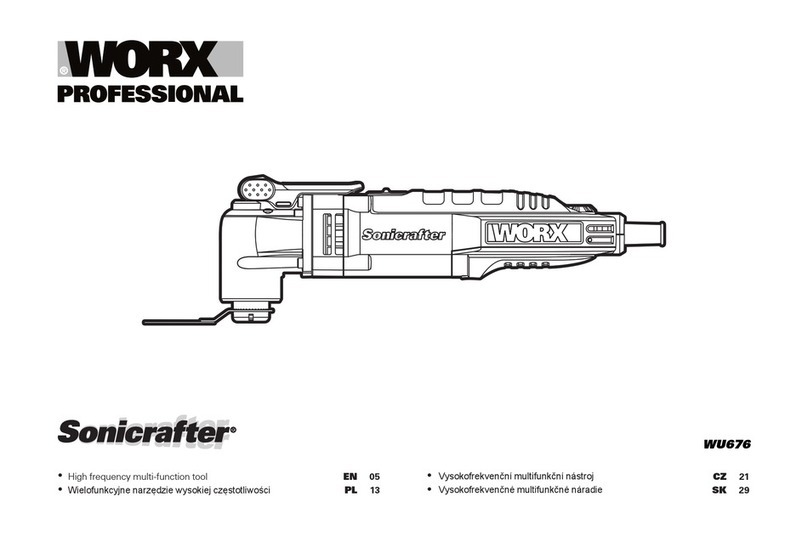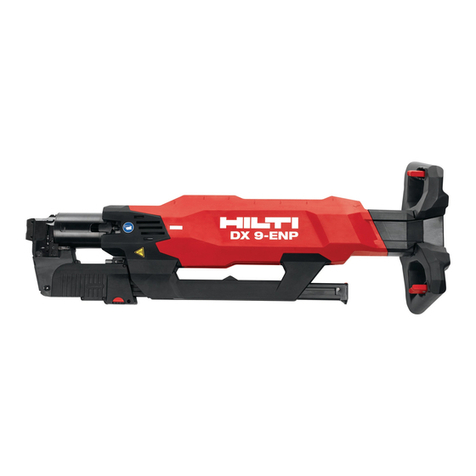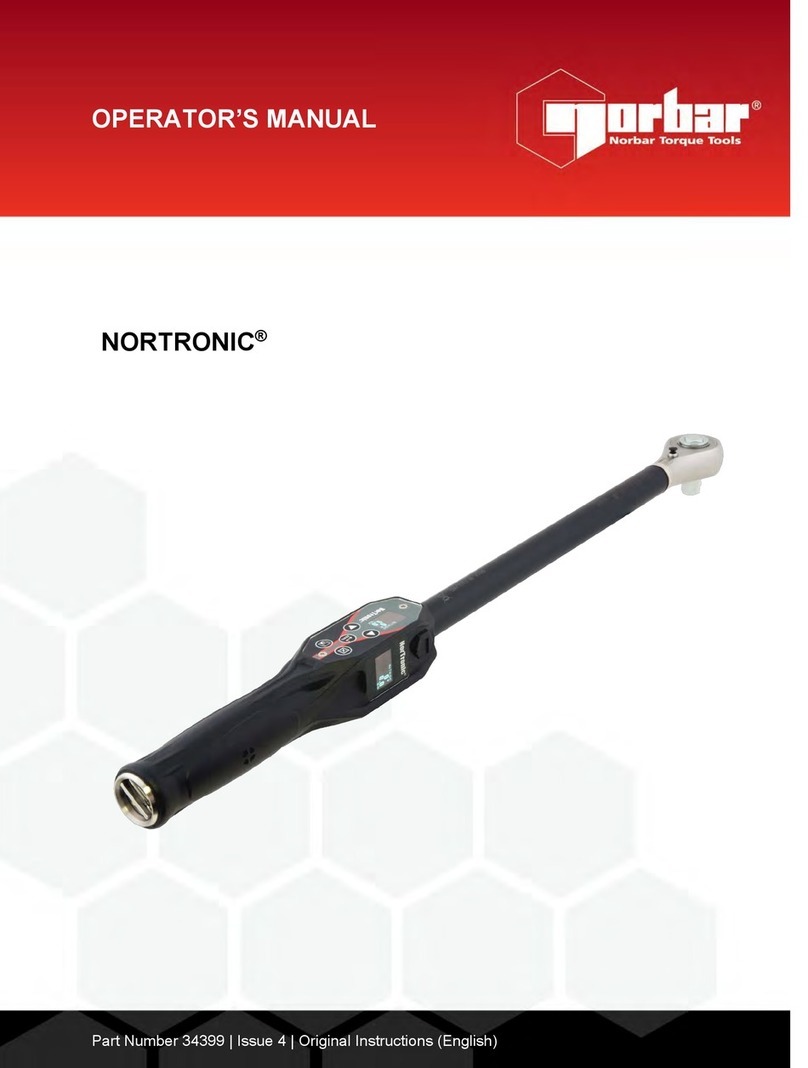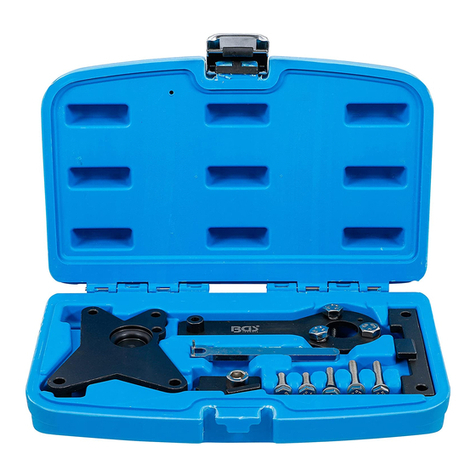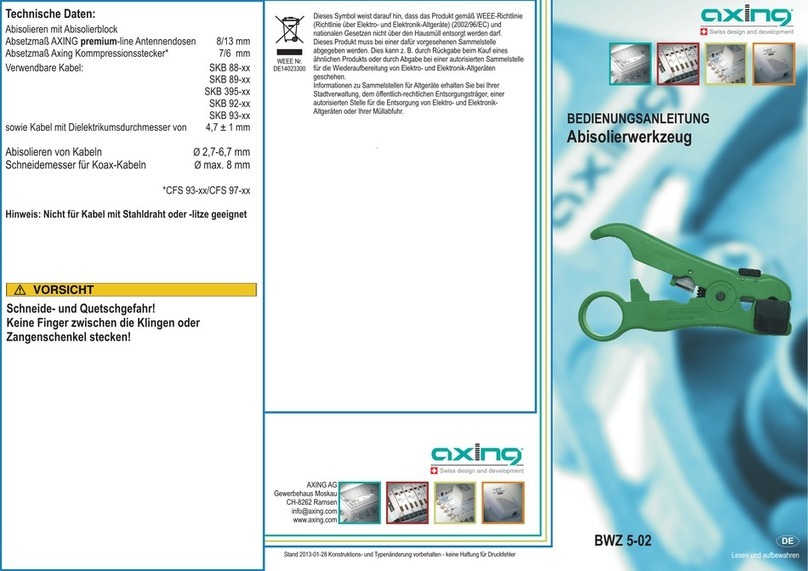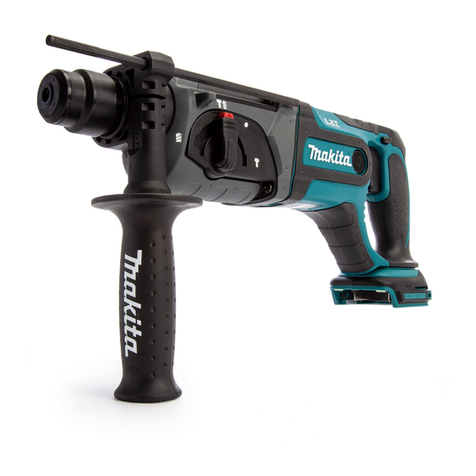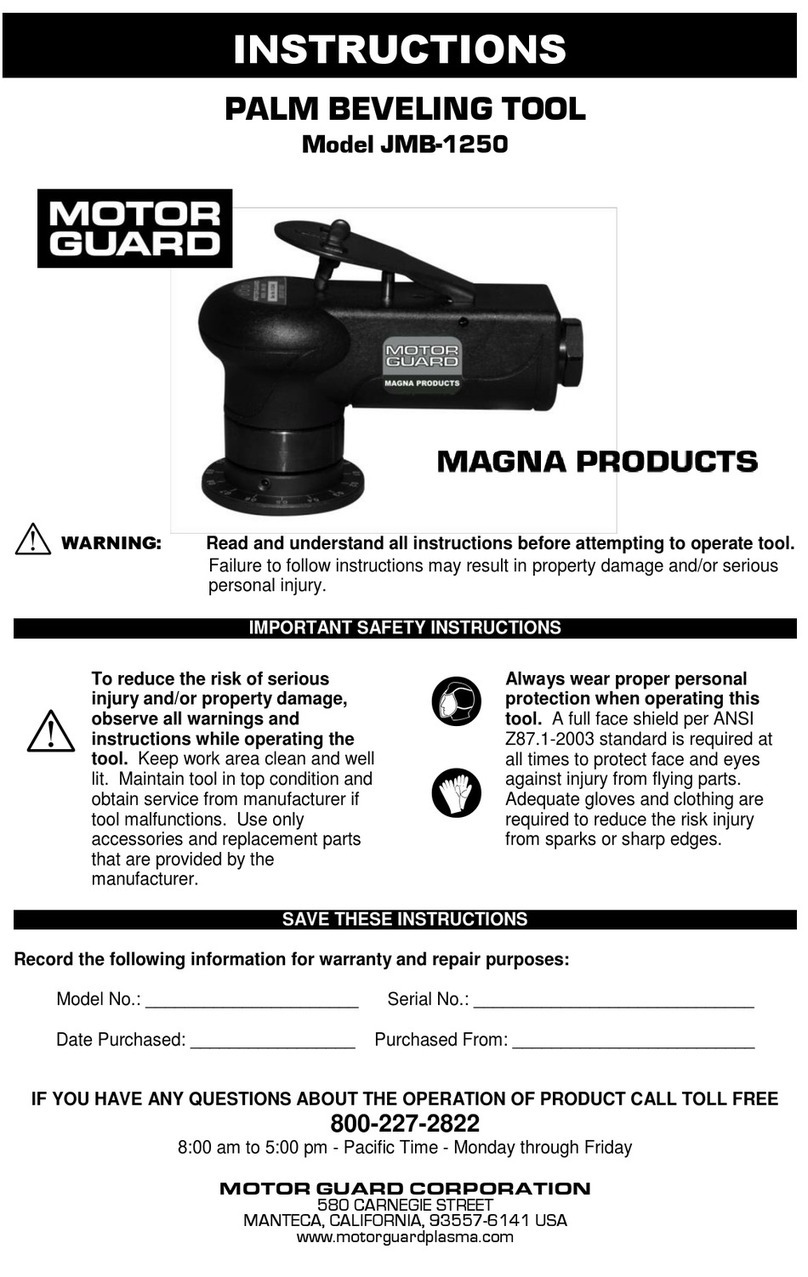
1
KURT INDUSTRIAL PRODUCTS
OVERVIEW OF "640, 430" VISES
The new DoubleLock vises from Kurt include improvements that simplify
its operations. Please read this entire instruction manual to fully understand the
new features of the DoubleLock vise. You will find modifications have been
made that are different from the past DoubleLocks.
Kurt's new DoubleLock has a design that fits current user needs and meets
their expectations of a simple, functional vise. The new DL640, DL430,
CT640, and CT430 maintains the 3", and 4" opening, same bed height with the
DL430 and DL640, and same accuracy and has superior features over past
Kurt DoubleLock style vises. Listed are the re-designed features of the new
DoubleLock vise. Please refer to the page listed on index for setup instructions.
1. Clutch design- The new clutch has a recoil spring attached to the
clutch. It's designed to return the clutch back into the correct position
automatically. It resets into the correct position every time the vise jaws
are opened. No more timing problems ever!
2. New Holding Block- The function of the holding block is to give the
end user the adjustment features to clamp dissimilar size parts and
provides front or back part spring loaded pre-clamping. The new
holding block is completely self-adjusting that includes a double pre-
load. This means the user may clamp one part first, front or back station
before loading the second part. No need to adjust for dissimilar parts.
Also included is a pre-load range adjustment nut that will give the user
the option to choose how much pre-load range they need. (.010 min to
.150" max) When setting to minimum range, this will reduce the amount
of handle turns needed when opening or closing the Vise. PLEASE
NOTE: This vise has been assembled to factory settings and no further
adjustments are required. The holding block pre-load and pre-load
adjustment nut are new features of this products design and allows
adjustment for a specific setup. Please see "Holding Block Pre-Load"
and "Pre-Load range adjustment nut" setup sections in this guide.
3. New Overall length- DL640 is 22.5"(21.5" with optional internal hex),
and 18.5" (17.5" with internal hex) on the DL430.
